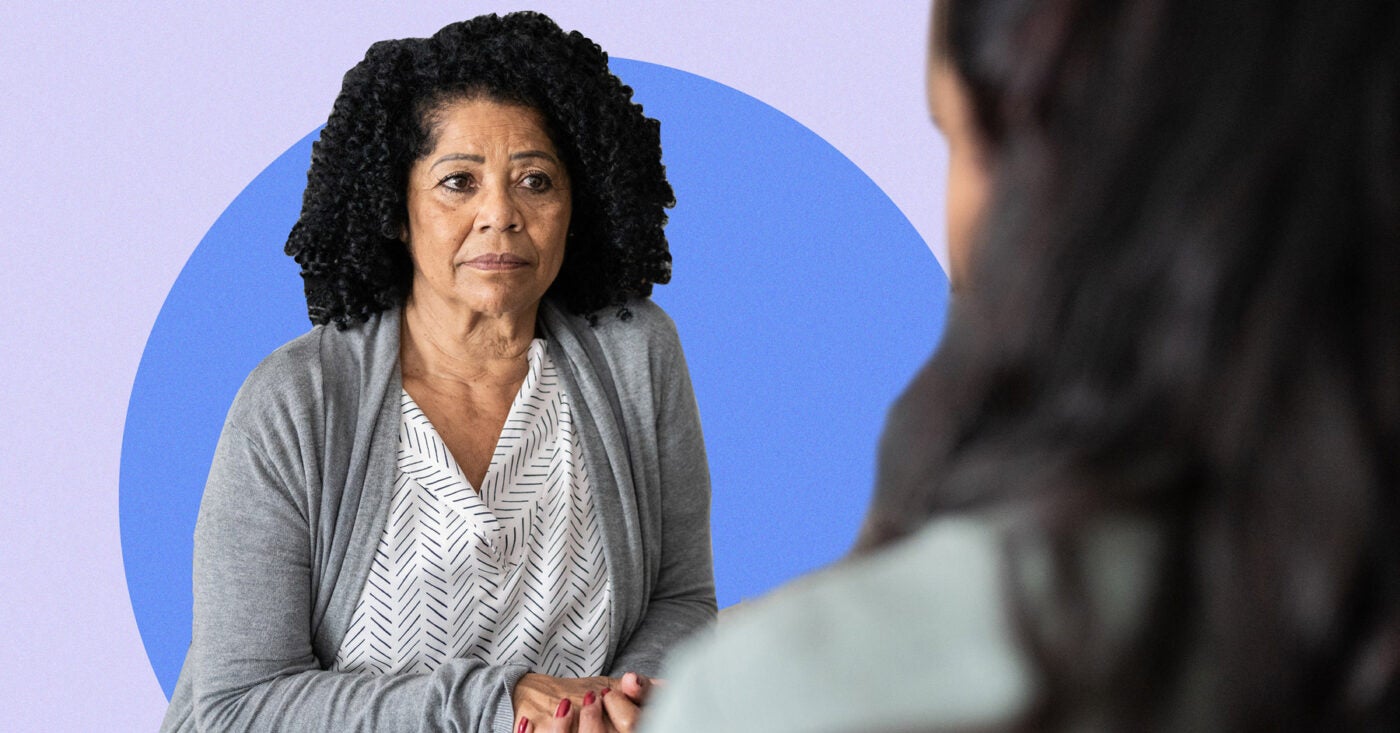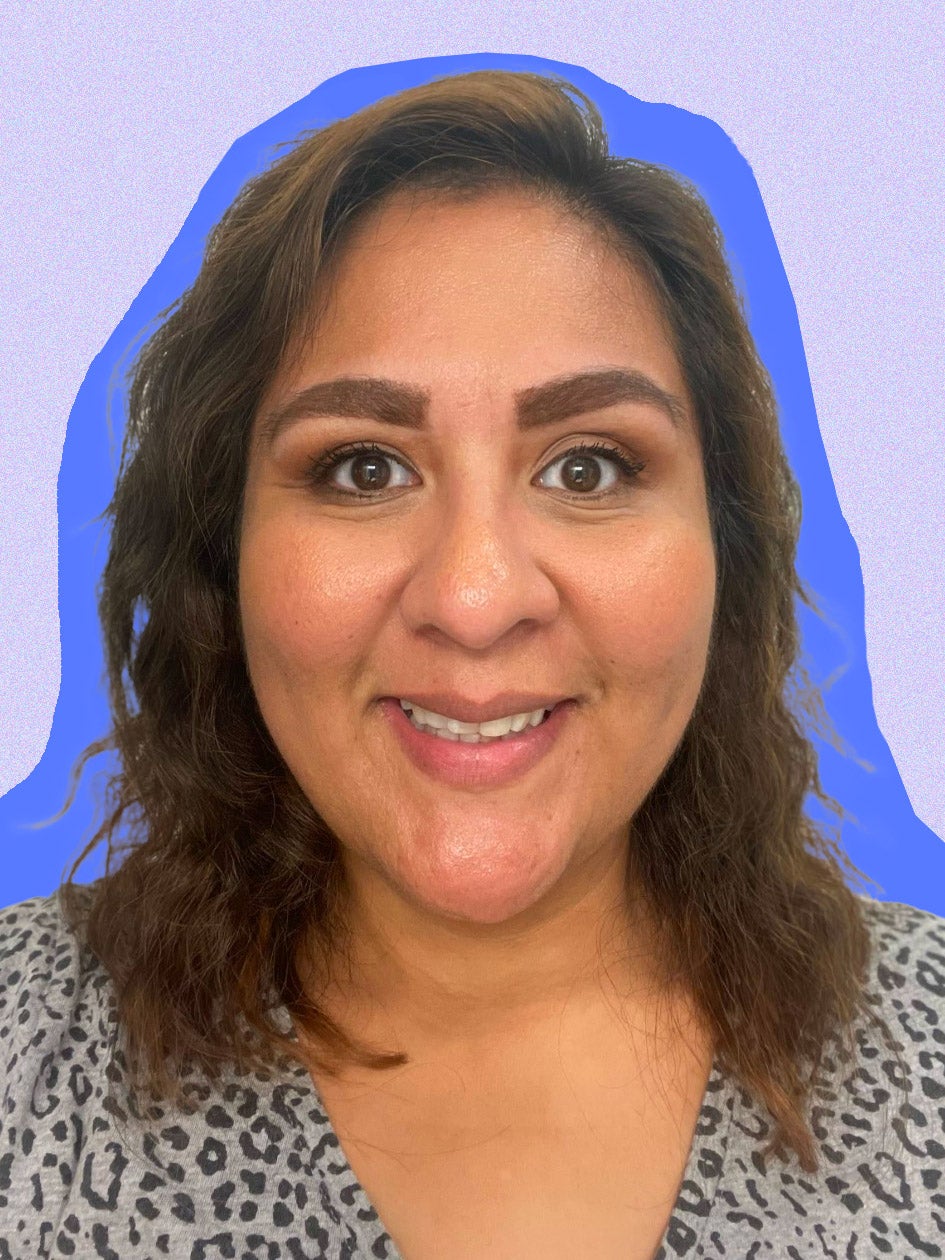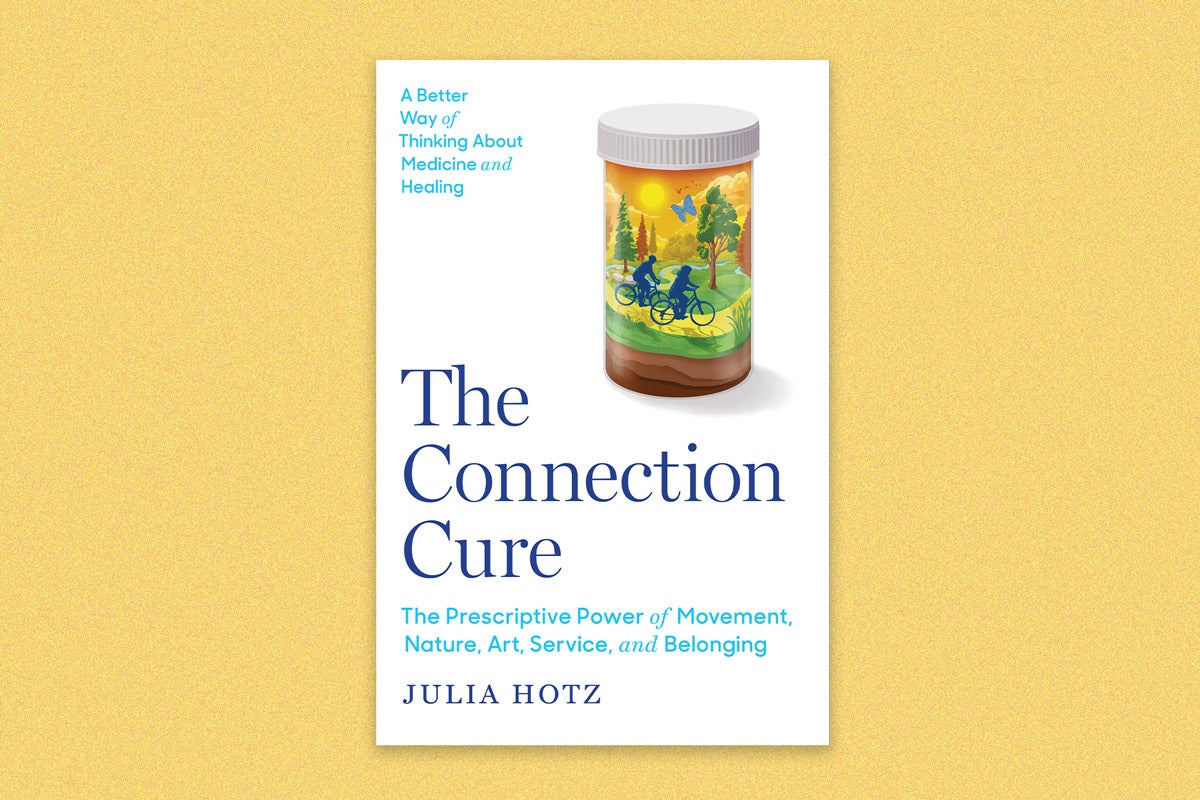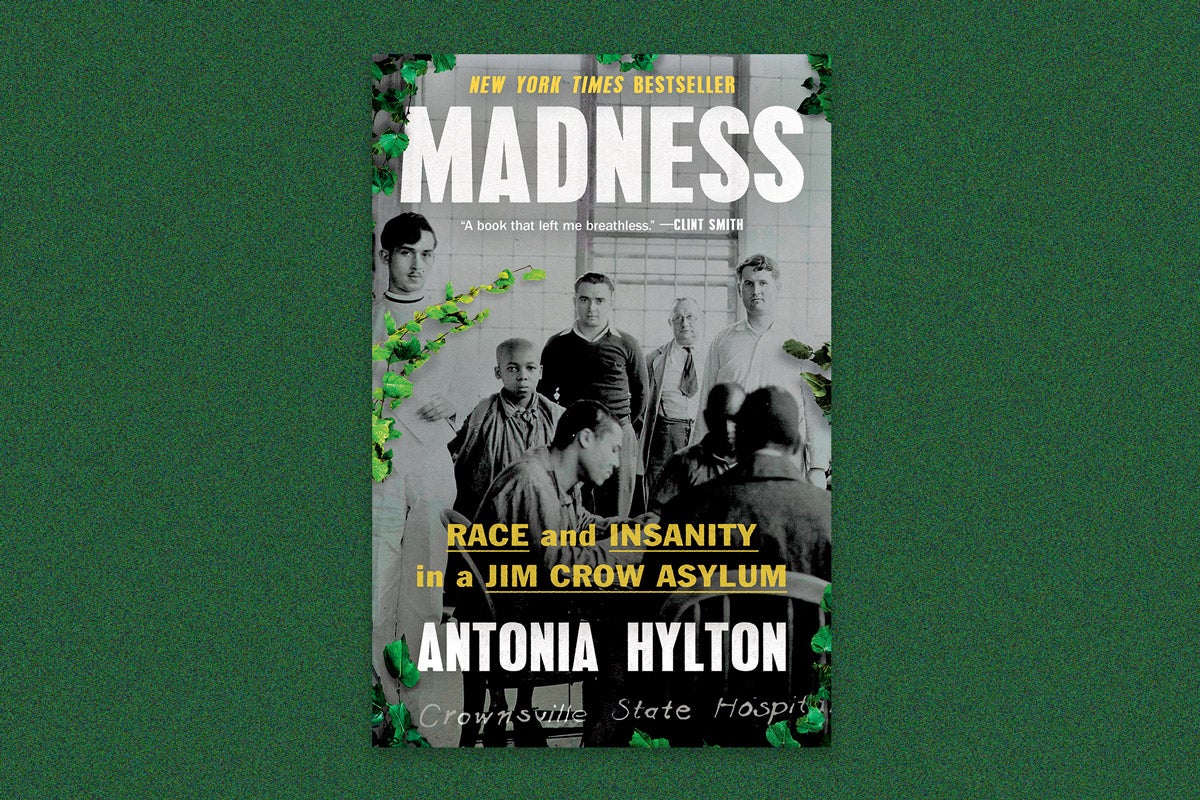
Opinion
Giving caregivers the tools to cope
This article is part of Public Health in Action, a new series from Harvard Public Health and The Studio that examines mental health programs across the U.S. that produce results.
I am a clinical supervisor at the Inland Caregiver Resource Center, a nonprofit social services agency that works with senior citizens and with family caregivers who tend to be seniors, mostly 60 and older. Some of them are experiencing a difficult transition to retirement or stresses from downsizing and moving to new homes. They are often in the “sandwich generation,” new to being a caregiver, and have limited resources.
We work with people in their homes or meet them at community centers. We see a lot of caregiver burnout—people so busy taking care of a loved one that they don’t have time to care for themselves—and signs of depression. We wanted to address these issues, and PEARLS had a model for helping people problem-solve and improve well-being. It seemed like a natural fit.
Keep up with the series
PEARLS gives people techniques to break down problems into pieces they can resolve. They often recognize a change in their mood—they’ve felt down or in a funk—and can identify what is causing that shift. We work with seniors to teach them the model, which gives them a sense of control: They can decide and have say so over their problems. One key skill for people is learning how to slow down their thought processes and focus on each part of the model. You’ll see it click for them once they understand it.

We use the language of caregiver burnout to start conversations because there is often stigma around mental health services. If you ask them, “Are you depressed?” they’ll say, “Whoa! I’m not depressed.” But they are used to hearing about caregiver burnout, so we ask them, “How is your burnout presenting itself?” They might say it’s affecting their sleep or they’re overeating or not eating.
I was in the first group at Inland to train with PEARLS; we were three counselors and a supervisor, as well as a few other staff members. It’s a very structured program—there’s lots of tracking, and lots of paperwork; the training was intense, comprising two 8-hour days. It was all in English, and we work with a population that is majority Spanish-speaking. So the first couple of years we were building the plane while flying it: We had to figure out how to translate the materials, or how to adapt the parts of the program where people have to write, since some of our clients aren’t literate. The PEARLS team has monthly calls where we could check in and ask questions, and the team was flexible and encouraging, telling us it was ok to translate their materials.
The translation work wasn’t always straightforward: For instance, do we say “perlas” for “PEARLS?” Because it’s an acronym. When we translated the Patient Health Questionnaire-9, a standard tool for measuring depression, we had to decide what Spanish word to use where the questionnaire says “down, sad, or hopeless.” “Sad” in English translates to “desanimado,” but I wanted to go to “triste,” which is more down to earth, more “home Spanish” than formal Spanish. It’s a word that resonates with people. It took a while to translate the practices, too—to develop techniques to work with monolingual Spanish speakers. We were seeing successes with our English-speaking or bilingual population, so we knew it was working.
We have found that because our titles are “PEARLS counselors,” people think it is counseling or talk therapy. This is not talk therapy. We also don’t do what social workers often do, which is give people answers. We might spend an hour talking through a situation before the real problem comes out. That can be discouraging for people; they’re hoping you will give them resources, and we’re working to get them to find their own solutions.
Many of our seniors are in our programs because they are caring for a loved one. If they’re doing PEARLS when that loved one passes away, it makes a world of difference for them. They have rapport with their PEARLS counselor, which gives them support. They also get to prioritize problems to work on and talk through things like managing the process, allowing for grief, or making room for self-care and compassion.
I really love it when they have what I call the “lightbulb moment,” where they start doing things they enjoy again.
Top image, source image: FG Trade / iStock
Jennifer Lopez: Courtesy of Jennifer Lopez

Republish this article
<p>The PEARLS program tackles seniors' burnout with problem-solving.</p>
<p>Written by Jennifer Lopez</p>
<p>This <a rel="canonical" href="https://harvardpublichealth.org/mental-health/how-the-pearls-program-cares-for-the-sandwich-generation/">article</a> originally appeared in<a href="https://harvardpublichealth.org/">Harvard Public Health magazine</a>. Subscribe to their <a href="https://harvardpublichealth.org/subscribe/">newsletter</a>.</p>
<p class="is-style-t-caption">This article is part of <a href="http://harvardpublichealth.org/public-health-in-action/" target="_blank" rel="noreferrer noopener">Public<strong> </strong>Health<strong> </strong>in Action</a>, a new series from <em>Harvard Public Health</em> and The Studio that examines mental health programs across the U.S. that produce results.</p>
<p class="has-drop-cap">I am a clinical supervisor at the Inland Caregiver Resource Center, a nonprofit social services agency that works with senior citizens and with family caregivers who tend to be seniors, mostly 60 and older. Some of them are experiencing a difficult transition to retirement or stresses from downsizing and moving to new homes. They are often in the “sandwich generation,” new to being a caregiver, and have limited resources.</p>
<p>We work with people in their homes or meet them at community centers. We see a lot of caregiver burnout—people so busy taking care of a loved one that they don’t have time to care for themselves—and signs of depression. We wanted to address these issues, and <a href="https://harvardpublichealth.org/event/pearls/" target="_blank" rel="noreferrer noopener">PEARLS</a> had a model for helping people problem-solve and improve well-being. It seemed like a natural fit.</p>
<p>PEARLS gives people techniques to break down problems into pieces they can resolve. They often recognize a change in their mood—they’ve felt down or in a funk—and can identify what is causing that shift. We work with seniors to teach them the model, which gives them a sense of control: They can decide and have say so over their problems. One key skill for people is learning how to slow down their thought processes and focus on each part of the model. You’ll see it click for them once they understand it.</p>
<p>We use the language of caregiver burnout to start conversations because there is often stigma around mental health services. If you ask them, “Are you depressed?” they’ll say, “Whoa! I'm not depressed.” But they are used to hearing about caregiver burnout, so we ask them, “How is your burnout presenting itself?” They might say it's affecting their sleep or they're overeating or not eating.</p>
<p>I was in the first group at Inland to train with PEARLS; we were three counselors and a supervisor, as well as a few other staff members. It’s a very structured program—there’s lots of tracking, and lots of paperwork; the training was intense, comprising two 8-hour days. It was all in English, and we work with a population that is majority Spanish-speaking. So the first couple of years we were building the plane while flying it: We had to figure out how to translate the materials, or how to adapt the parts of the program where people have to write, since some of our clients aren’t literate. The PEARLS team has monthly calls where we could check in and ask questions, and the team was flexible and encouraging, telling us it was ok to translate their materials.</p>
<p>The translation work wasn’t always straightforward: For instance, do we say “perlas” for “PEARLS?” Because it’s an acronym. When we translated the <a href="https://www.apa.org/depression-guideline/patient-health-questionnaire.pdf" target="_blank" rel="noreferrer noopener">Patient Health Questionnaire-9</a>, a standard tool for measuring depression, we had to decide what Spanish word to use where the questionnaire says “down, sad, or hopeless.” “Sad” in English translates to “desanimado,” but I wanted to go to “triste,” which is more down to earth, more “home Spanish” than formal Spanish. It’s a word that resonates with people. It took a while to translate the practices, too—to develop techniques to work with monolingual Spanish speakers. We were seeing successes with our English-speaking or bilingual population, so we knew it was working.</p>
<p>We have found that because our titles are “PEARLS counselors,” people think it is counseling or talk therapy. This is not talk therapy. We also don’t do what social workers often do, which is give people answers. We might spend an hour talking through a situation before the real problem comes out. That can be discouraging for people; they’re hoping you will give them resources, and we’re working to get them to find their own solutions.</p>
<p>Many of our seniors are in our programs because they are caring for a loved one. If they’re doing PEARLS when that loved one passes away, it makes a world of difference for them. They have rapport with their PEARLS counselor, which gives them support. They also get to prioritize problems to work on and talk through things like managing the process, allowing for grief, or making room for self-care and compassion.</p>
<p class=" t-has-endmark t-has-endmark">I really love it when they have what I call the “lightbulb moment,” where they start doing things they enjoy again.</p>
<p class="is-style-t-caption">Top image, source image: FG Trade / iStock</p>
<script async src="https://www.googletagmanager.com/gtag/js?id=G-S1L5BS4DJN"></script>
<script>
window.dataLayer = window.dataLayer || [];
if (typeof gtag !== "function") {function gtag(){dataLayer.push(arguments);}}
gtag('js', new Date());
gtag('config', 'G-S1L5BS4DJN');
</script>
Republishing guidelines
We’re happy to know you’re interested in republishing one of our stories. Please follow the guidelines below, adapted from other sites, primarily ProPublica’s Steal Our Stories guidelines (we didn’t steal all of its republishing guidelines, but we stole a lot of them). We also borrowed from Undark and KFF Health News.
Timeframe: Most stories and opinion pieces on our site can be republished within 90 days of posting. An article is available for republishing if our “Republish” button appears next to the story. We follow the Creative Commons noncommercial no-derivatives license.
When republishing a Harvard Public Health story, please follow these rules and use the required acknowledgments:
- Do not edit our stories, except to reflect changes in time (for instance, “last week” may replace “yesterday”), make style updates (we use serial commas; you may choose not to), and location (we spell out state names; you may choose not to).
- Include the author’s byline.
- Include text at the top of the story that says, “This article was originally published by Harvard Public Health. You must link the words “Harvard Public Health” to the story’s original/canonical URL.
- You must preserve the links in our stories, including our newsletter sign-up language and link.
- You must use our analytics tag: a single pixel and a snippet of HTML code that allows us to monitor our story’s traffic on your site. If you utilize our “Republish” link, the code will be automatically appended at the end of the article. It occupies minimal space and will be enclosed within a standard <script> tag.
- You must set the canonical link to the original Harvard Public Health URL or otherwise ensure that canonical tags are properly implemented to indicate that HPH is the original source of the content. For more information about canonical metadata, click here.
Packaging: Feel free to use our headline and deck or to craft your own headlines, subheads, and other material.
Art: You may republish editorial cartoons and photographs on stories with the “Republish” button. For illustrations or articles without the “Republish” button, please reach out to republishing@hsph.harvard.edu.
Exceptions: Stories that do not include a Republish button are either exclusive to us or governed by another collaborative agreement. Please reach out directly to the author, photographer, illustrator, or other named contributor for permission to reprint work that does not include our Republish button. Please do the same for stories published more than 90 days previously. If you have any questions, contact us at republishing@hsph.harvard.edu.
Translations: If you would like to translate our story into another language, please contact us first at republishing@hsph.harvard.edu.
Ads: It’s okay to put our stories on pages with ads, but not ads specifically sold against our stories. You can’t state or imply that donations to your organization support Harvard Public Health.
Responsibilities and restrictions: You have no rights to sell, license, syndicate, or otherwise represent yourself as the authorized owner of our material to any third parties. This means that you cannot actively publish or submit our work for syndication to third-party platforms or apps like Apple News or Google News. Harvard Public Health recognizes that publishers cannot fully control when certain third parties aggregate or crawl content from publishers’ own sites.
You may not republish our material wholesale or automatically; you need to select stories to be republished individually.
You may not use our work to populate a website designed to improve rankings on search engines or solely to gain revenue from network-based advertisements.
Any website on which our stories appear must include a prominent and effective way to contact the editorial team at the publication.
Social media: If your publication shares republished stories on social media, we welcome a tag. We are @PublicHealthMag on X, Threads, and Instagram, and Harvard Public Health magazine on Facebook and LinkedIn.
Questions: If you have other questions, email us at republishing@hsph.harvard.edu.


